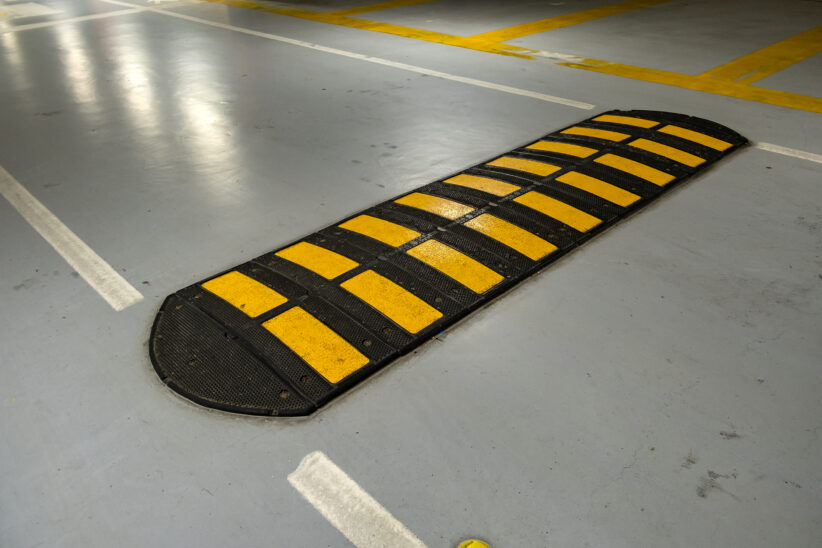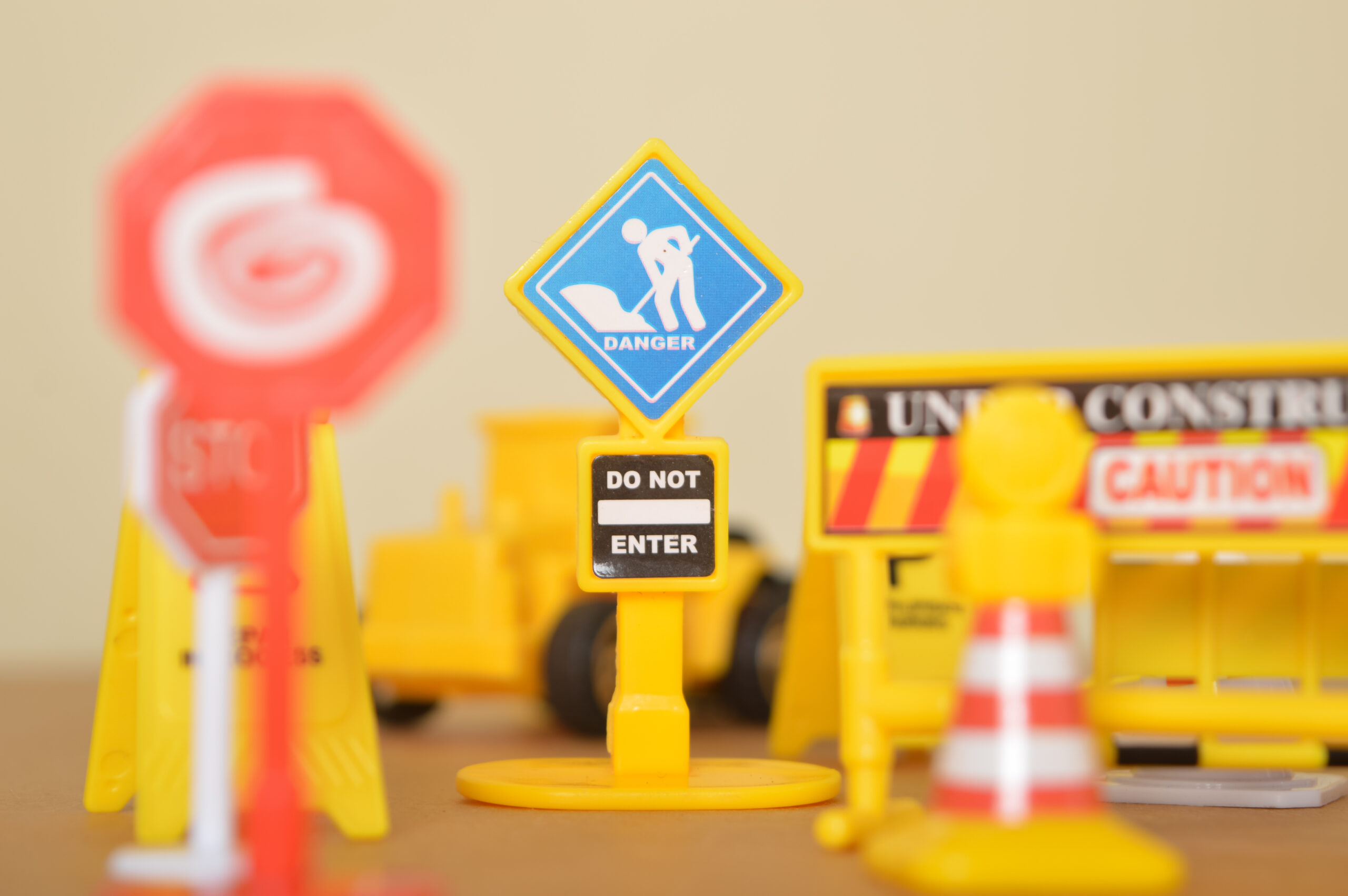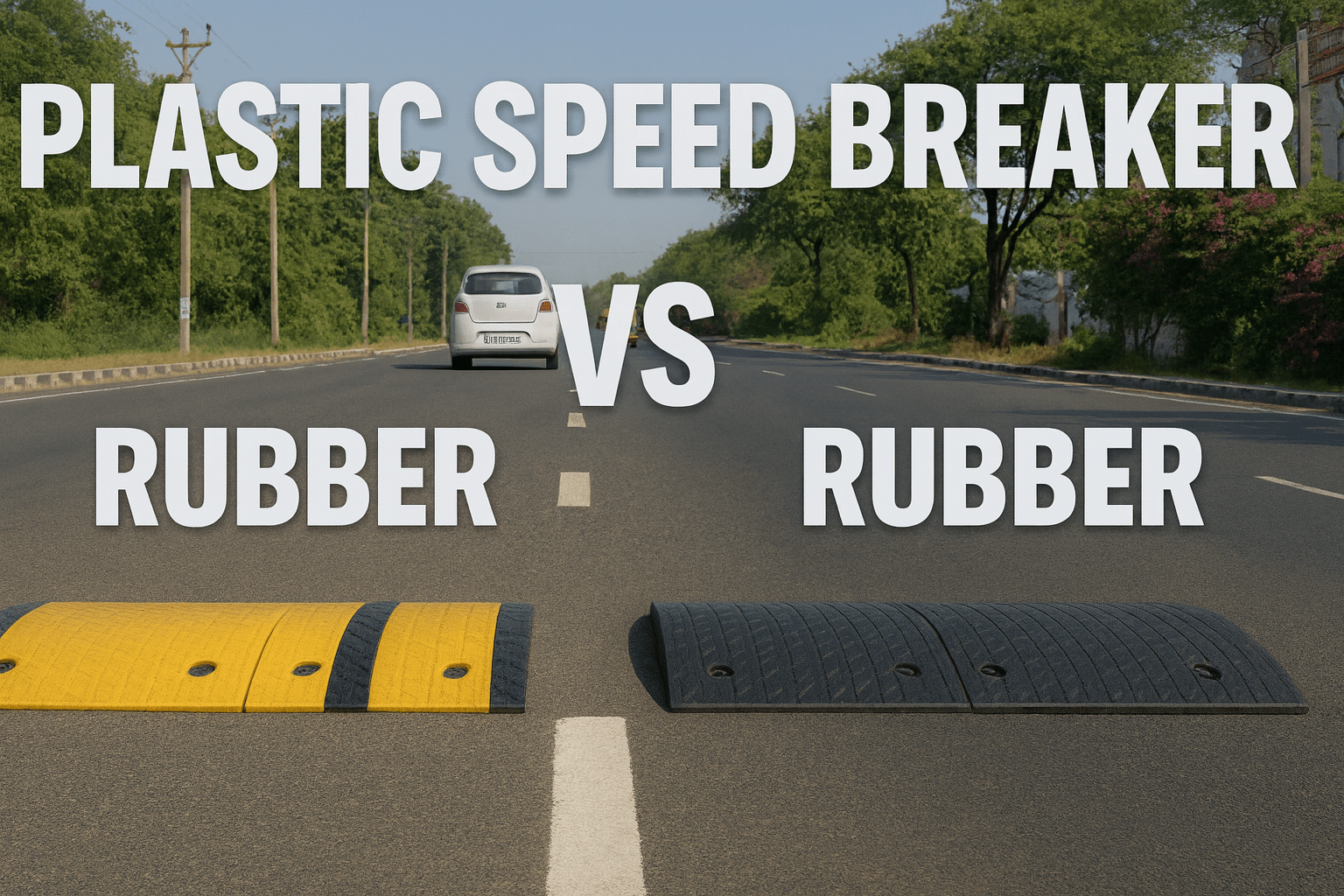Speed Breaker Types You’re Using Wrong – And How to Fix It (With Safe Driving Tips)
Ever felt your car jolt hard while driving through a quiet neighborhood or near a school? That wasn’t just a rough patch of road. You probably hit the wrong speed breaker — or worse, a badly placed one.
In India alone, more than 100,000 speed breakers are either poorly designed or wrongly located. These aren’t just annoying. They can damage your vehicle, slow traffic, and even cause accidents. What’s meant to protect us often ends up creating danger — all because of poor planning or lack of awareness.
Want to save your car’s suspension, avoid surprise jolts, and drive safely? Let’s break down the types of speed breakers most people misuse — and how to handle them better.
What Is a Speed Breaker, Really?
A speed breaker is a road safety feature. It slows down vehicles in places like school zones, residential areas, or accident-prone roads. It’s meant to protect lives — both drivers and pedestrians.
But here’s the thing — not all speed breakers are the same. Some are smooth and rounded. Others are short and sharp. They come in different sizes, shapes, materials, and follow different design rules.
If you don’t know which one you’re driving over, you could be risking more than just a bumpy ride. You might damage your car or lose control, especially in bad weather.
Speed Bump vs Speed Hump vs Speed Table: What’s the Difference?
Let’s clear up the confusion first. These are often mixed up, but they’re not the same. Each one is designed for a specific use and driving condition.
The 6 Types of Speed Breakers (You Might Be Using Wrong)
- Speed Hump
- What it is: A long, rounded bump stretched across 3–4 meters.
- Where it’s used: Inside housing colonies, residential streets, and smaller town roads.
- Common mistake: Driving too fast, thinking it’s just a tiny bump.
- How to fix it: Slow down to 10–15 km/h. Use 2nd gear. Keep a steady throttle and avoid braking on top.
Speed humps are meant to gently slow you down. But if you approach too fast, your car may bounce hard and stress the suspension over time.
- Speed Bump
- What it is: Shorter, steeper bump — around 0.3 to 1 meter wide.
- Where it’s used: Parking lots, private roads, and inside malls.
- Common mistake: Hitting brakes last minute.
- How to fix it: Brake before reaching the bump. Then coast over it slowly in low gear.
These are meant for slow-speed zones only. If you drive fast, you risk scraping the underbody or damaging your bumper — especially in low-clearance vehicles.
- Speed Table
- What it is: A wide, flat-topped bump. Feels more like a platform than a bump.
- Where it’s used: On bus routes, near hospitals, and at busy intersections.
- Common mistake: Ignoring it or accelerating through.
- How to fix it: Slow down gradually. It’s designed for smoother driving, not speeding.
Speed tables give a balanced experience — safer for all and smoother for drivers. But they still need respect. Speeding can throw off vehicle balance.
- Rumble Strip
- What it is: A series of small, raised strips that make your vehicle vibrate.
- Where it’s used: Near toll plazas, sharp turns, and major junctions.
- Common mistake: Treating them like speed breakers. Sudden braking or swerving.
- How to fix it: Just reduce speed a little. Keep your wheels centered and drive through calmly.
These aren’t meant to stop you — just to alert you. Overreacting can make things worse.
- Raised Pedestrian Crossing
- What it is: A crosswalk that’s raised like a speed table. It’s a walkway and speed breaker in one.
- Where it’s used: School zones, shopping streets, and residential junctions.
- Common mistake: Not stopping for pedestrians or driving too fast.
- How to fix it: Approach slowly. Stop if anyone is crossing. Be extra careful in crowded zones.
These crossings are meant to keep people safe. If you ignore them, it’s not just risky — it could cost you a fine or worse.
- One-Way Spikes / Anti-Speeding Breakers
- What it is: Sharp, direction-based spikes that allow movement in only one way.
- Where it’s used: Exit gates, restricted zones, and private roads.
- Common mistake: Trying to enter from the wrong side or reversing over them.
- How to fix it: Always follow the signs. Never go in the wrong direction or back up over them.
These are no joke. Getting it wrong can rip your tires or mess up your suspension.
Common Mistakes Drivers Make Over Speed Breakers
You’re not the only one. Most drivers handle speed breakers the wrong way. Here’s what many do wrong:
- Braking too late — causes jerks or skids
- Using high gear — reduces control and stresses engine mounts
- Driving too fast — damages the suspension or undercarriage
- Crossing diagonally — leads to poor wheel alignment and tire wear
- Forgetting about low-clearance cars — more likely to hit the bottom
Fix it: Always approach speed breakers at 10–15 km/h. Use 1st or 2nd gear. Don’t brake on the bump. Keep the wheels straight and only accelerate once you’re fully past it.
Are City Planners Getting It Wrong Too?
Yes — and way too often. A lot of municipal speed breakers in India ignore the guidelines set by the Indian Roads Congress (IRC).
Here’s where things go wrong:
- Bumps are too steep or uneven — they feel like mini walls
- No reflective paint — invisible at night
- No warning signs — drivers don’t see them coming
- Placed after curves or intersections — you don’t get time to react
- No street lights nearby — risky after dark
These aren’t just bad for cars. They’re dangerous for bikers and pedestrians. And they go against the entire purpose of having speed breakers in the first place.
How to Fix It – Tips for Drivers and Road Authorities
For Drivers:
You can’t fix the road, but you can control how you drive. Here’s what helps:
- Identify the speed breaker type from a distance
- Start slowing down at least 10–15 meters ahead
- Stick to lower gears — 1st or 2nd
- Don’t press the brake on the bump
- Keep the steering straight for better balance
For Road Authorities:
Better design leads to better safety. Here’s what planners can do:
- Add warning signs at least 20–30 meters before the bump
- Use white or yellow reflective paint for night visibility
- Build to standard size and slope (as per IRC)
- Don’t place bumps near curves or on inclines
- Improve lighting near speed breakers
When drivers and road planners work together, roads get safer. Accidents go down, and journeys become smoother.
Real-Life Story: When It Went Wrong
A Bengaluru driver wrecked his brand-new sedan at night. The cause? An unmarked speed bump placed just after a curve. There was no sign, no paint, and no warning.
The damage? A torn underbody and a repair bill of ₹18,000.
This isn’t rare. Many speed breakers across India break the rules. They damage cars, injure riders, and even cause fatal crashes.
Don’t be the next one in the news. Know your road — and the breakers on it.
Final Thoughts: Don’t Let a Bump Slow You Down (For Long)
Speed breakers should protect lives — not damage vehicles or scare drivers. But that only happens when they’re built right — and used the right way.
When you know what kind of speed breaker you’re facing and how to drive over it, you protect more than your car. You protect your safety and others on the road too.
Whether you drive daily, plan city infrastructure, or care about road safety — it’s time to rethink how we treat speed breakers.
Ready to drive smarter?
- Spotted a badly placed speed breaker in your city? Drop it in the comments!
- Want a handy printable for safer road bumps?
- Subscribe for more safety tips, smart driving hacks, and car care guides.
Let’s make Indian roads safer — one speed breaker at a time.




Add Comment